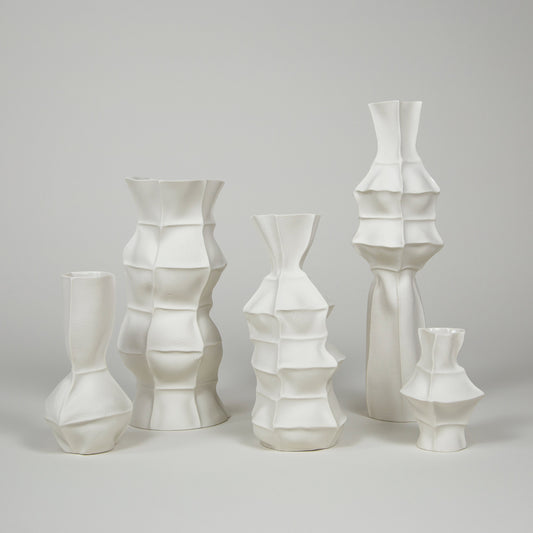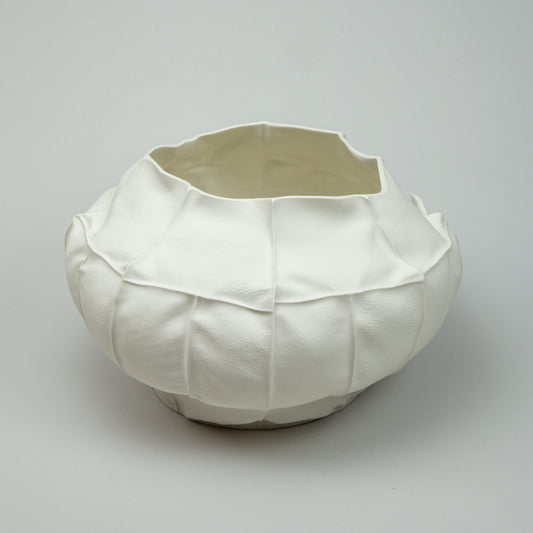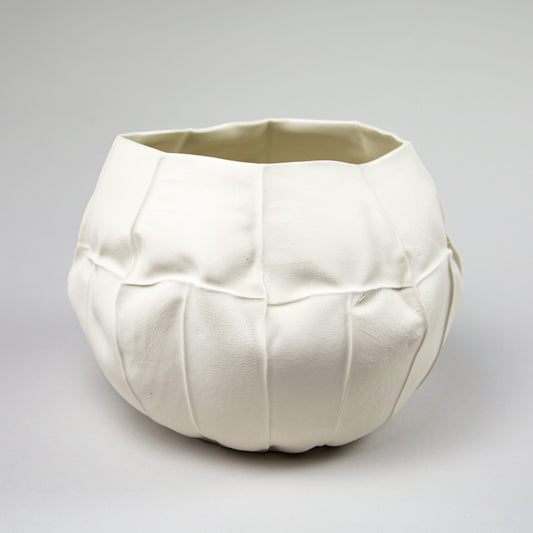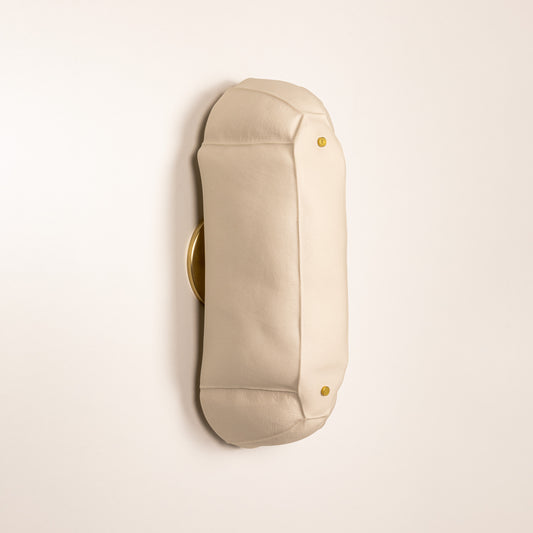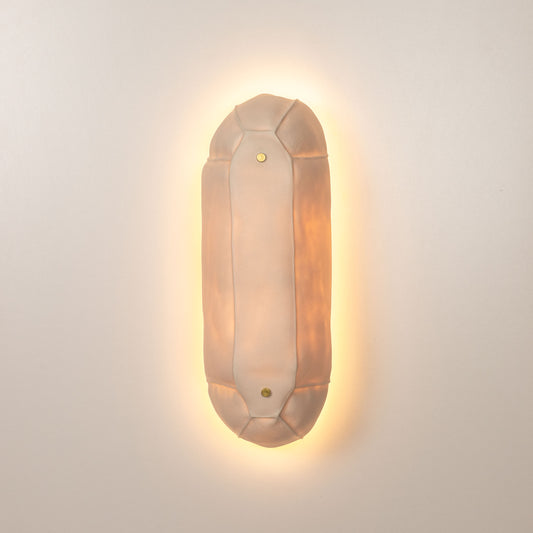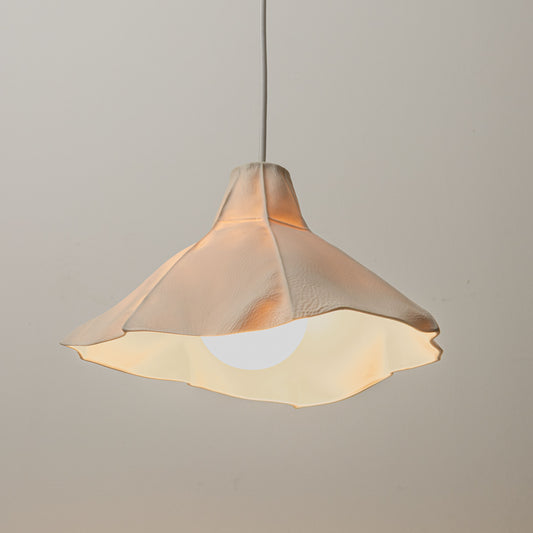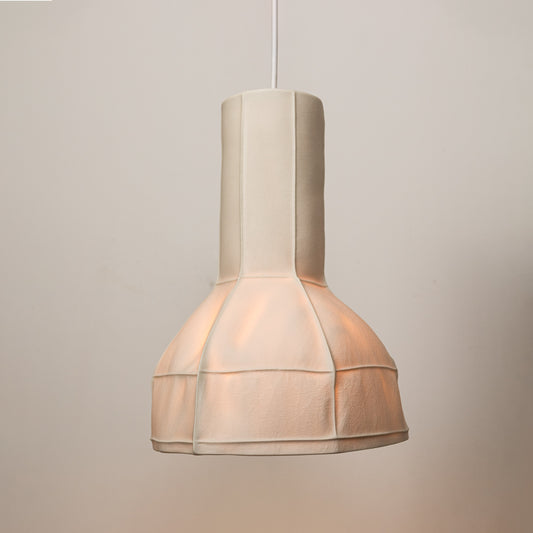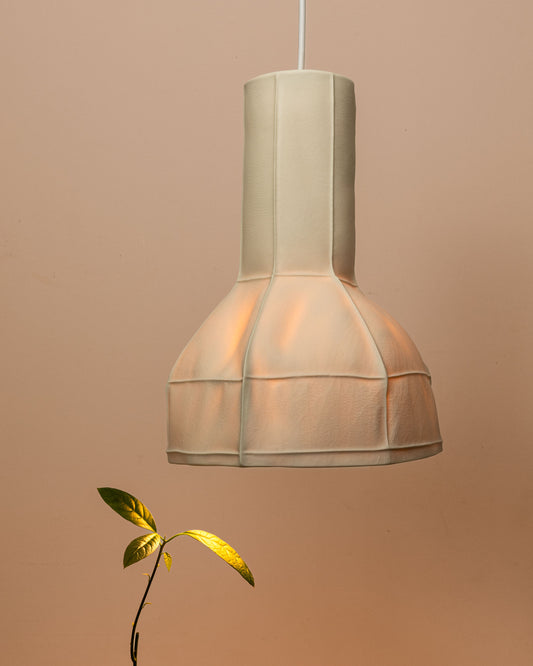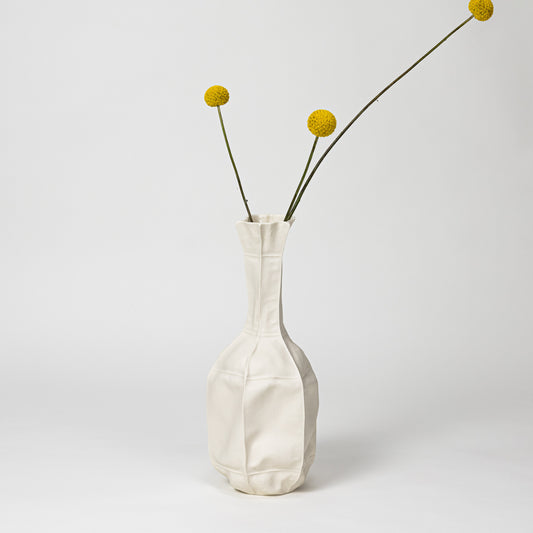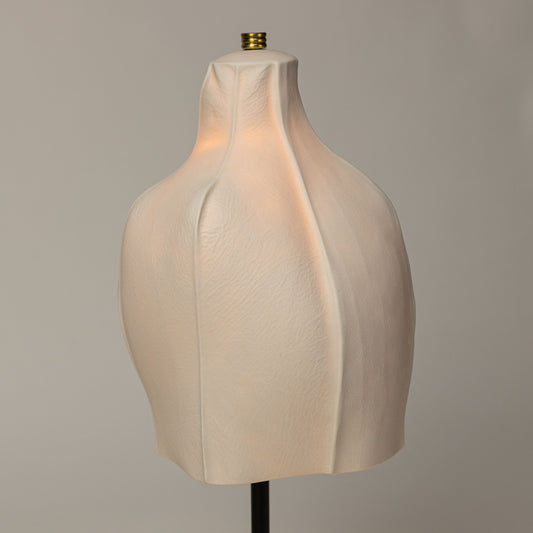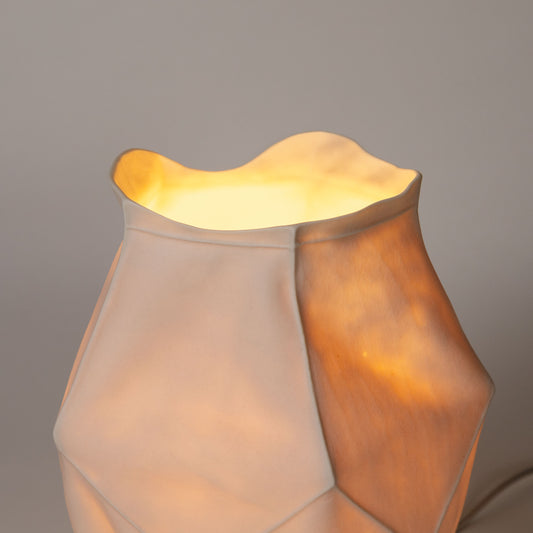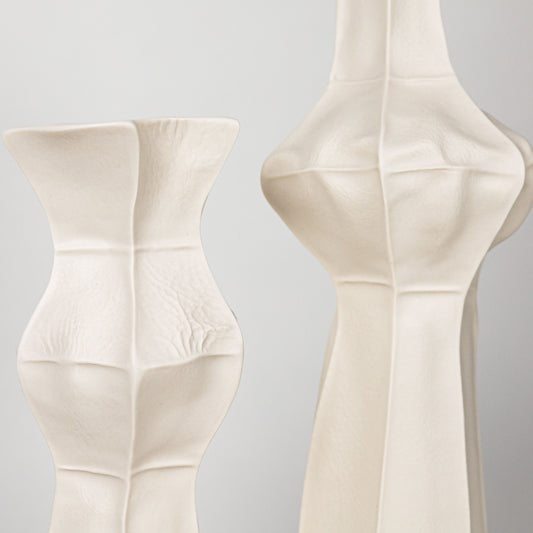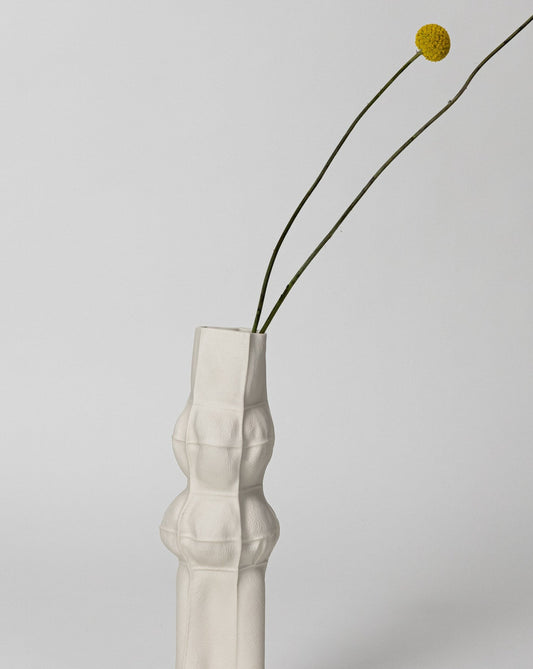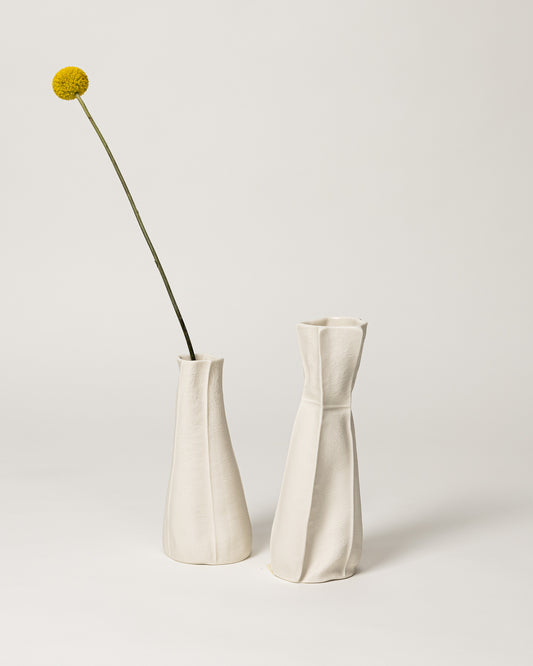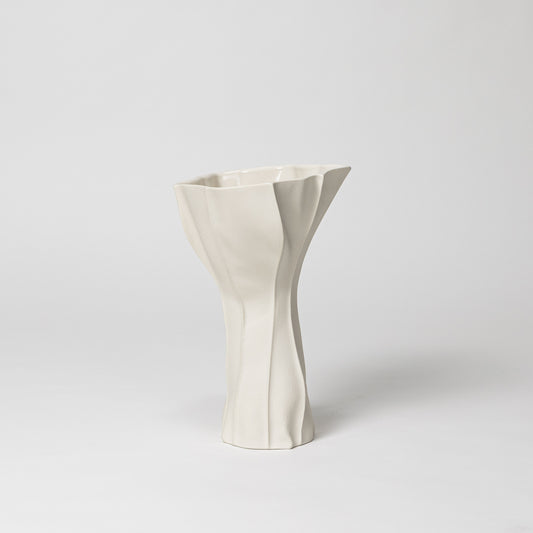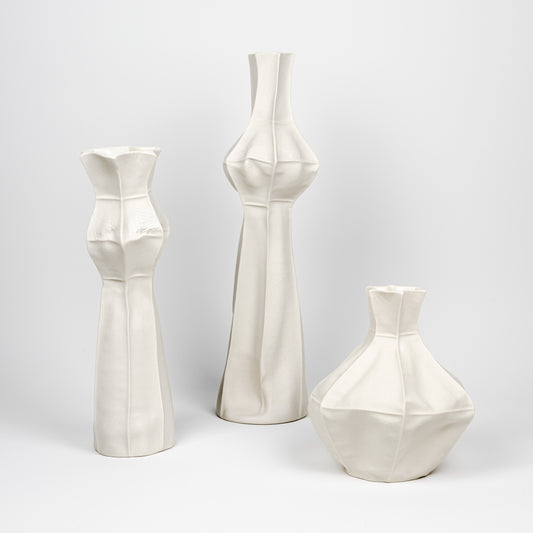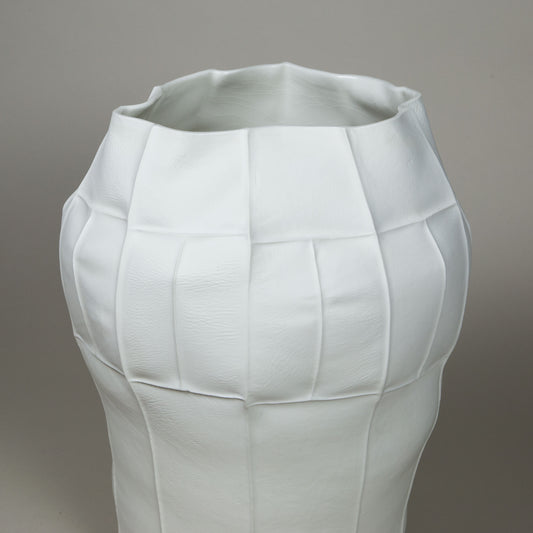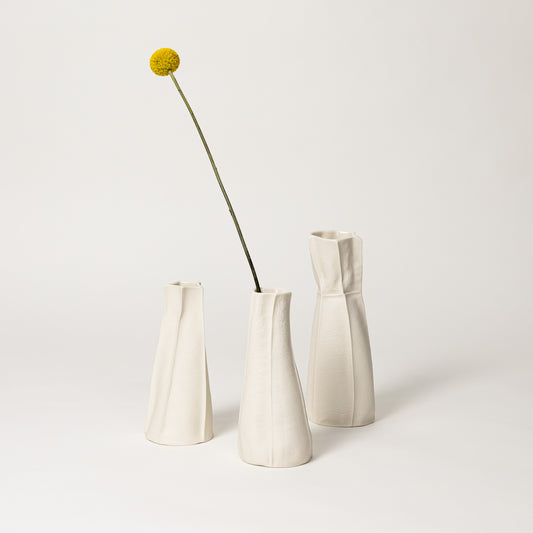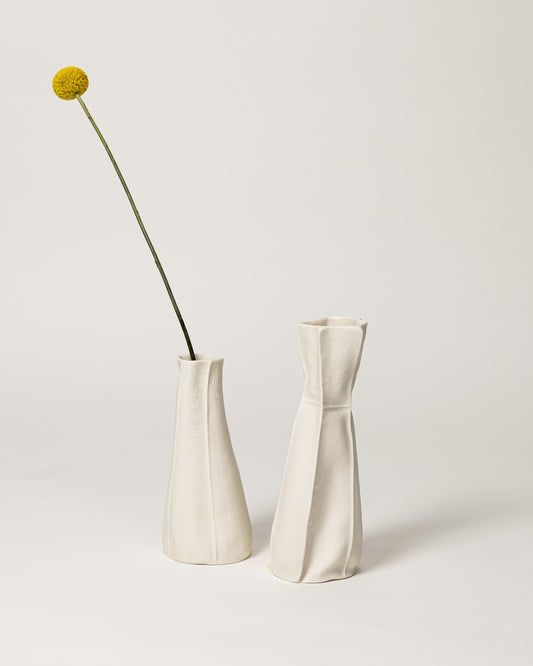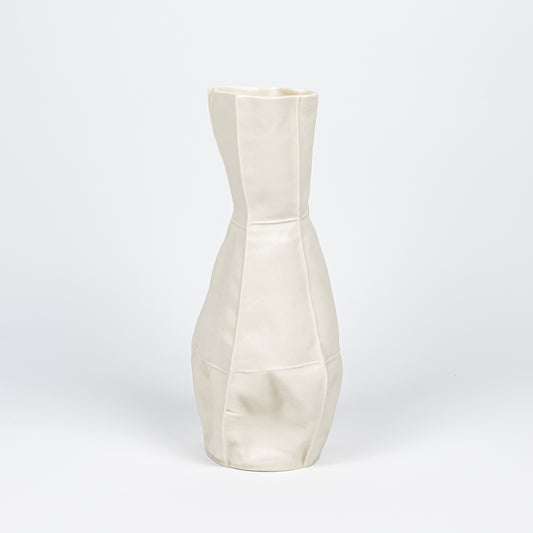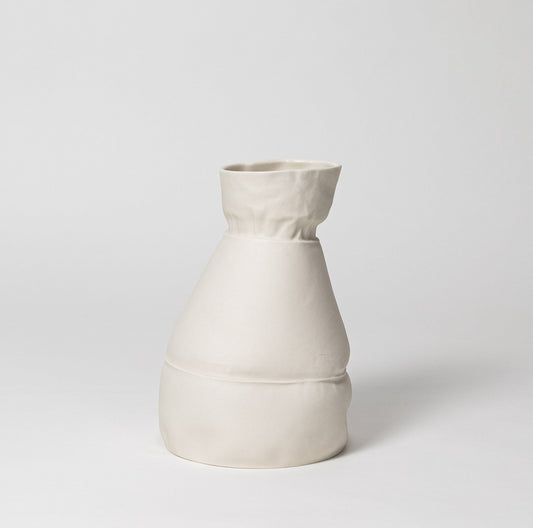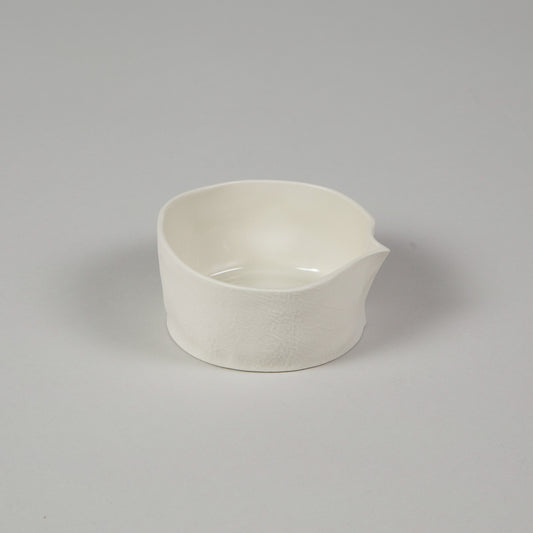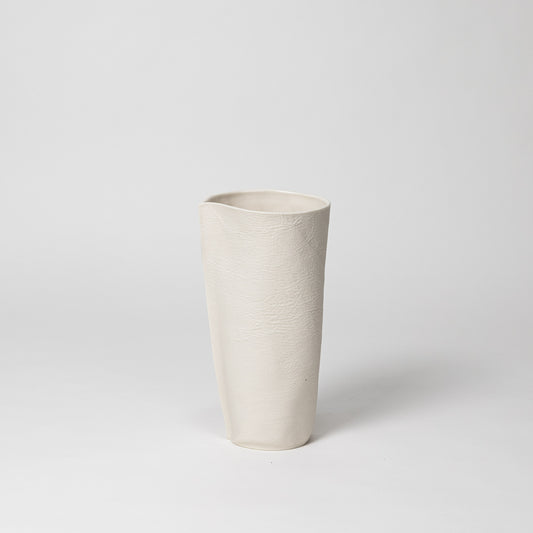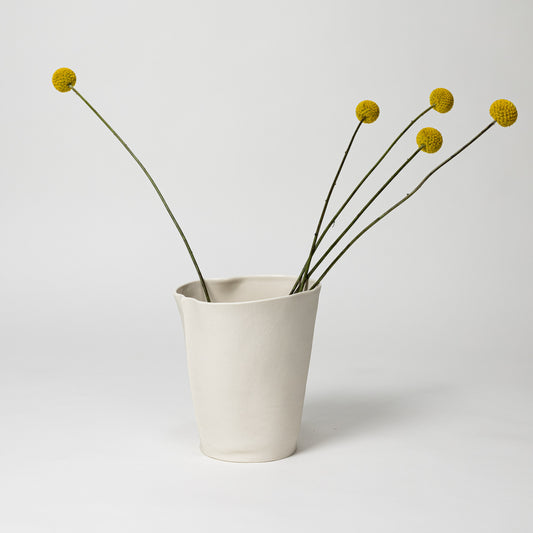Kawa Series: Leather-Cast Ceramics
The unusual and painstakingly honed technique used to create the Kawa Series is distinct to Luft Tanaka Studio. Each Kawa piece begins as a sketch on paper. With the assistance of digital tools, we create patterns for a leather mold. After the mold is sewn and prepared for casting, liquid porcelain is poured inside, over time forming a thin wall along the leather surface. The mold is then carefully cut open at the seams and delicately peeled off the porcelain.
-
Kawa Vases Set of 5
Regular price $4,000.00 USDRegular priceUnit price per -
Kawa Large Vessel 01
Regular price $2,700.00 USDRegular priceUnit price per -
Kawa Large Vessel 02
Regular price $2,700.00 USDRegular priceUnit price per -
Kawa Wall Sconce 01
Regular price $1,400.00 USDRegular priceUnit price per -
Kawa Series Light 04
Regular price $1,000.00 USDRegular priceUnit price per -
Kawa Series Light 05
Regular price $1,400.00 USDRegular priceUnit price per -
Kawa Vase 18
Regular price $1,250.00 USDRegular priceUnit price per -
Kawa Vase 12
Regular price $900.00 USDRegular priceUnit price per -
Kawa Table Lamp 01
Regular price $1,000.00 USDRegular priceUnit price per -
Kawa Table Lamp 02
Regular price $575.00 USDRegular priceUnit price per -
Pair of Kawa Vases 06 & 07
Regular price $1,500.00 USDRegular priceUnit price per -
Pair of Kawa Vessels 10 & 12inch
Regular price $1,100.00 USDRegular priceUnit price per -
Kawa Vase 17
Regular price $650.00 USDRegular priceUnit price per -
Pair of Kawa Vases 04 & 05
Regular price $475.00 USDRegular priceUnit price per -
Kawa Vase 9.1
Regular price $500.00 USDRegular priceUnit price per -
Kawa Vases set of 3 01
Regular price $2,000.00 USDRegular priceUnit price per -
Kawa Large Vessel 03
Regular price $3,000.00 USDRegular priceUnit price per -
Kawa Vessel Set of 3
Regular price $1,950.00 USDRegular priceUnit price per -
Kawa Large Vessel 02.1
Regular price $1,500.00 USDRegular priceUnit price per -
Kawa Vase 04
Regular price $225.00 USDRegular priceUnit price per -
Kawa Vase 05
Regular price $275.00 USDRegular priceUnit price per -
Kawa Vase 14
Regular price $350.00 USDRegular priceUnit price per -
Kawa Vessel 12inch
Regular price $700.00 USDRegular priceUnit price per -
Kawa Vase 16
Regular price $550.00 USDRegular priceUnit price per -
Kawa Small Dish - Mint Green
Regular price $95.00 USDRegular priceUnit price per -
Kawa Small Dish - White
Regular price $95.00 USDRegular priceUnit price per -
Kawa Vessel 10inch
Regular price $475.00 USDRegular priceUnit price per -
Kawa Vessel 8inch
Regular price $350.00 USDRegular priceUnit price per -
Kawa Vase 13
Regular price $425.00 USDRegular priceUnit price per
Background
The Kawa Series was initially conceived in early 2012, when Luft’s thesis project at the Parsons School of Design called for a varied collection of eye-catching objects. Guided as he often is by his wabi-sabi tendencies, Luft became obsessed with devising a new system of production where process dictated form—and where objects created in multiples could still be one-of-a-kind. He experimented with a number of mediums over the course of a few months, but his aha-moment came one afternoon when he stumbled upon a discarded leather couch on a Manhattan curb. (“Kawa” is Japanese for “leather” or “skin.”)
Luft had been studying the process of slip-casting, a traditional ceramic technique used to create nearly-identical objects—though typically using solid plaster molds. His technical understanding allowed him to see an opportunity in that curbside leather couch, so he did what any industrial design student would do: He took his utility knife out of his bag, stripped the couch of its leather, and brought his new materials back to the studio for immediate experimentation.
By testing many different types of leather, as well as different ways to fabricate the molds, Luft gradually evolved the process from a messy first batch, where many of the pieces didn't survive the kiln, to test pieces that bore the early marks of his signature: both weird and beautiful, hard and soft, expressive, and full of personality.



